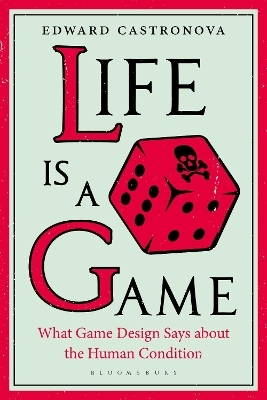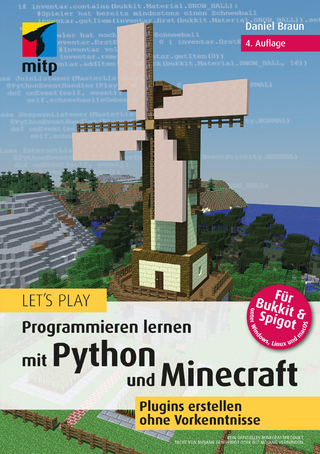
Life Is a Game
Bloomsbury Academic USA (Verlag)
978-1-5013-6061-9 (ISBN)
Game design could be defined in many ways, but here the term is used to denote the practice of creating choices. Designing a game, in this sense, involves crafting limits, rewards, incentives, and risks in such a way that the person who interacts with the game – the player – makes choices that have consequences.
Edward Castronova urges readers to think about the fundamentals of the human condition and compare them to different games that we all know. In some ways, life is like an idle game: providing unchallenging distractions that fit easily into a person's daily routine. In other ways, life is like the game Minesweeper: You poke in different places to learn about what you don’t know, taking care to avoid big explosions. Or, life is like a role-playing game: You adopt a persona and speak your part, always seeking adventure.
Bringing together questions relating to diverse fields – such as politics, economics, sociology and philosophy - Castronova persuades readers to broaden the scope of game design to answer questions about life’s everyday obstacles. The object of this book is to take seriously the idea that life is a game. The goal is not to make readers wealthier or healthier. Its goal is to go on a journey into the human condition, with game design as a guide.
Edward Castronova is Professor of Media at Indiana University, USA. He is the author of Synthetic Worlds: The Business and Culture of Online Games (2006), Exodus to the Virtual World (2008) and Wildcat Currency: The Virtual Transformation of the Economy (2014). He specializes in Games, Technology, and Society, and has served in the past as Director of the BS degree program in Game Design, and Chair of the Department of Media Arts and Production.
Introduction
a. Stances and the Strategic Layer
b. Concepts and Examples
c. Is there a Game Designer?
d. Life’s Important; So Are Games
e. We Can Only Write From Who We Are
Part I: The Strategic Turn
1. Why Do Great Thinkers Keep Saying That Life is a Game?
a. The Many Similarities Between Living, Gaming, and Playing
b. Focus: Four Books that Come Close to Life, the Game
i. Hugo Rahner: Man at Play (1967/1949)
ii. Bernard Suits: The Grasshopper (1978)
iii. Michel de Certeau: The Practice of Everyday Life (1984)
iv. James Carse: Finite and Infinite Games (1987)
c. What is the Game of Life, Really?
d. The Present Moment: An Insufferable Boredom
e. How Game Design Responds to Boredom
2.The Environment of Decision
a. The natural world
b. Meaning and mind
c. Boredom and Suffering
d. The Immaterial World
3. Is this a game?
a. First features of the game of everything
i. Life as an idle game
ii. Life as Minesweeper
iii. Life as Role-Playing Game
b. What explains the similarity of life to a game?
c. How game design illuminates social processes
d. How to play
4. The Strategic Layer
a. Layers
b. Strategy and tactics
c. The strategic layer
d. On victory conditions
e. Operational goals
5. Stances
a. Choosing stances
b. Four strategic comments about philosophical commitments
c. How to evaluate a stance
d. How stances change
Part II. A Catalog of Stances
6. The Hedonistic Stance
a. Commitments
b. Victory conditions
c. Strategies
d. Assessment
7. The Excellence Stance
a. Commitments
b. Victory conditions
c. Strategies
d. Assessment
8. The Heroic Stance
a. Commitments
b. Victory conditions
c. Strategies
d. Assessment
9. The Orthodox Stance
a. Commitments
b. Victory conditions
c. Strategies
d. Assessment
10. The Mystic Stance
a. Commitments
b. Victory conditions
c. Strategies
d. Assessment
Part III. Conclusion
Bibliography
Index
| Erscheinungsdatum | 18.09.2020 |
|---|---|
| Verlagsort | New York |
| Sprache | englisch |
| Maße | 152 x 229 mm |
| Gewicht | 313 g |
| Themenwelt | Informatik ► Software Entwicklung ► Spieleprogrammierung |
| Mathematik / Informatik ► Mathematik ► Angewandte Mathematik | |
| Mathematik / Informatik ► Mathematik ► Finanz- / Wirtschaftsmathematik | |
| Sozialwissenschaften ► Kommunikation / Medien ► Medienwissenschaft | |
| ISBN-10 | 1-5013-6061-2 / 1501360612 |
| ISBN-13 | 978-1-5013-6061-9 / 9781501360619 |
| Zustand | Neuware |
| Haben Sie eine Frage zum Produkt? |
aus dem Bereich


